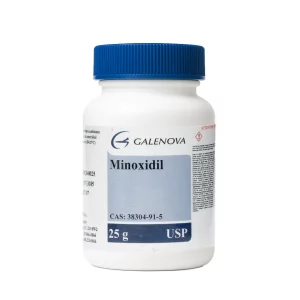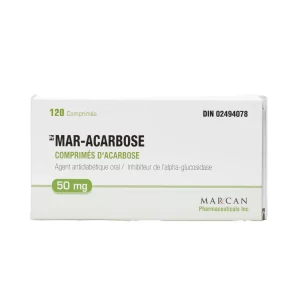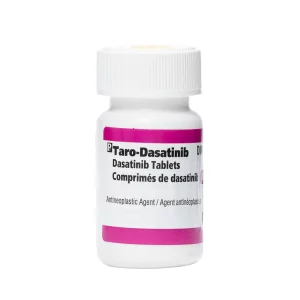Your cart is empty.
Your cart is empty.
Monoamine oxidase B (MAO-B) inhibitors are a class of medications that play a crucial role in supporting dopamine levels and managing neurodegenerative diseases. By inhibiting the activity of the MAO-B enzyme, these medications prevent the breakdown of dopamine, a neurotransmitter essential for motor function, mood regulation, and cognitive processes. This mechanism of action makes MAO-B inhibitors an effective treatment option for conditions such as Parkinson’s disease, where dopamine deficiency is a hallmark. By boosting dopamine levels, MAO-B inhibitors help alleviate symptoms, slow disease progression and improve quality of life.
Two major MAO-B inhibitors, rasagiline, and selegiline, have been widely used to manage Parkinson’s disease and other neurodegenerative disorders. Interestingly, selegiline for ADHD has also been explored, given its ability to regulate dopamine levels. Before you get Selegiline, consult with a healthcare professional to discuss the benefits and risks of this medication.
Rasagiline is a prescription medication approved by the FDA to treat Parkinson’s disease symptoms. It can be used alone or with other medicines. By selectively inhibiting monoamine oxidase B (MAO-B), rasagiline increases dopamine levels in the brain, alleviating symptoms. Its targeted mechanism of action blocks the MAO-B enzyme, breaking down dopamine, without affecting other neurotransmitters. Rasagiline offers once-daily dosing, consistent inhibition and avoids producing amphetamine metabolites, making it a safer and more tolerable option for many patients with Parkinson’s disease.
Selegiline is a prescription medication approved for treating Parkinson’s disease and major depressive disorder. As a selective monoamine oxidase B (MAO-B) inhibitor, selegiline blocks dopamine’s breakdown, increasing its availability in the brain. This enhances motor function and mood. Selegiline is available in oral tablets and transdermal patches, offering flexible dosing options. However, its metabolism produces amphetamine derivatives, including methamphetamine and amphetamine, which can be active and potentially interact with other medications.
Rasagiline and selegiline share notable similarities as therapeutic agents in the management of Parkinson’s disease. Both drugs are selective monoamine oxidase B (MAO-B) inhibitors, which enable them to increase dopamine availability in the brain. This mechanism of action helps alleviate motor symptoms associated with Parkinson’s disease, such as tremors and rigidity, thereby improving quality of life. Additionally, both rasagiline and selegiline can be used as monotherapy or in conjunction with levodopa treatment, offering flexible treatment options for patients. By targeting MAO-B, these drugs provide effective symptom management for individuals with Parkinson’s disease.
Rasagiline and selegiline are two selective monoamine oxidase B (MAO-B) inhibitors used in the treatment of Parkinson’s disease. Despite sharing a similar mechanism of action, these drugs exhibit distinct differences.

Clinical trials comparing rasagiline and selegiline in Parkinson’s disease treatment have demonstrated similarities and differences in their efficacy. Both drugs improved motor symptoms but with distinct profiles.
Key findings:

Choosing between rasagiline and selegiline depends on individual patient factors. Considerations include age, lifestyle, and medical history. For patients with gastrointestinal issues, transdermal selegiline may be preferred to avoid oral administration. On the other hand, some patients may opt for rasagiline due to its cleaner metabolism, avoiding amphetamine derivatives.
Patient-specific considerations
Ultimately, consulting a healthcare provider is essential to determine the best treatment option for each individual.
The main difference between rasagiline and selegiline is their metabolism, as rasagiline does not produce amphetamine derivatives, whereas selegiline is metabolized to amphetamine and methamphetamine.
Rasagiline and selegiline treat Parkinson’s disease by selectively inhibiting MAO-B, increasing dopamine levels. They alleviate symptoms like tremors, rigidity, and other motor impairments effectively.
Rasagiline is more effective for long-term use in Parkinson’s disease treatment, providing sustained symptom control and potentially slowing disease progression.
Switching from selegiline to rasagiline may be possible, but it’s essential to consult your healthcare provider first. They will assess your situation and guide safely transitioning between medications.


Minoxidil 25mg - Oral vasodilator for blood pressure management. Cardiovascular foundation support, pharmaceutical-grade standards, expert monitoring required.

Acarbose 50mg 120 Tablets - Gentle introduction to glucose control. Three-times daily with meals, precision-formulated tablet strength.

Dasatinib 20mg 60 Tablets - Flexible pediatric-strength dosing option. USP standards compliance, anytime administration, gradual increase capability.
Unlock savings on bundles and elevate your online experience today!